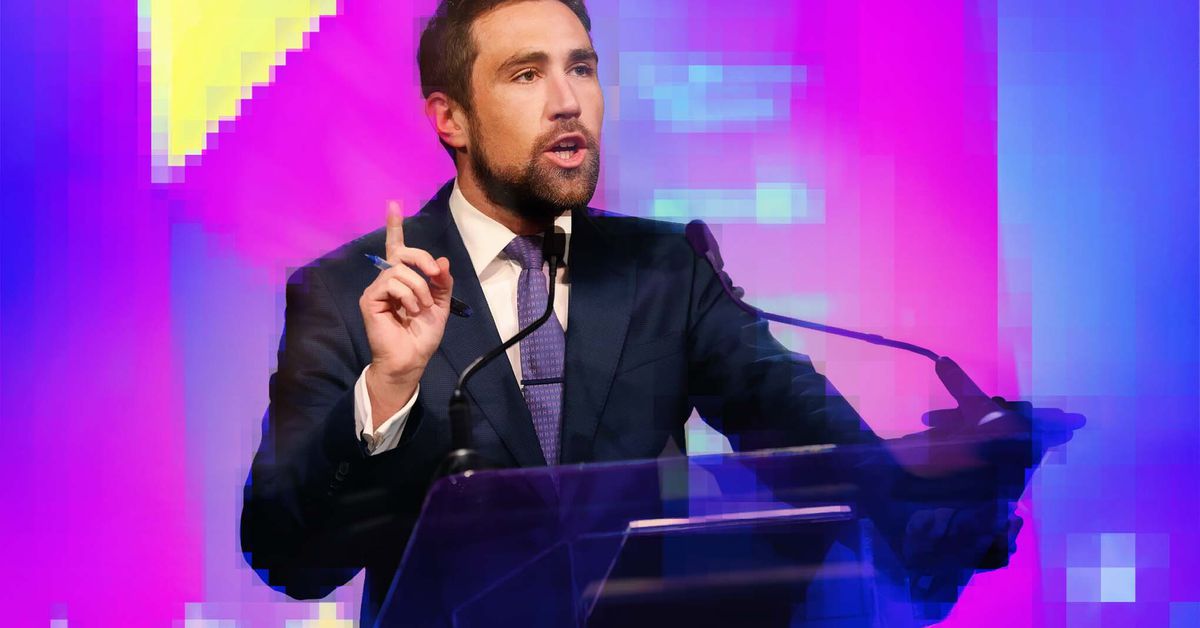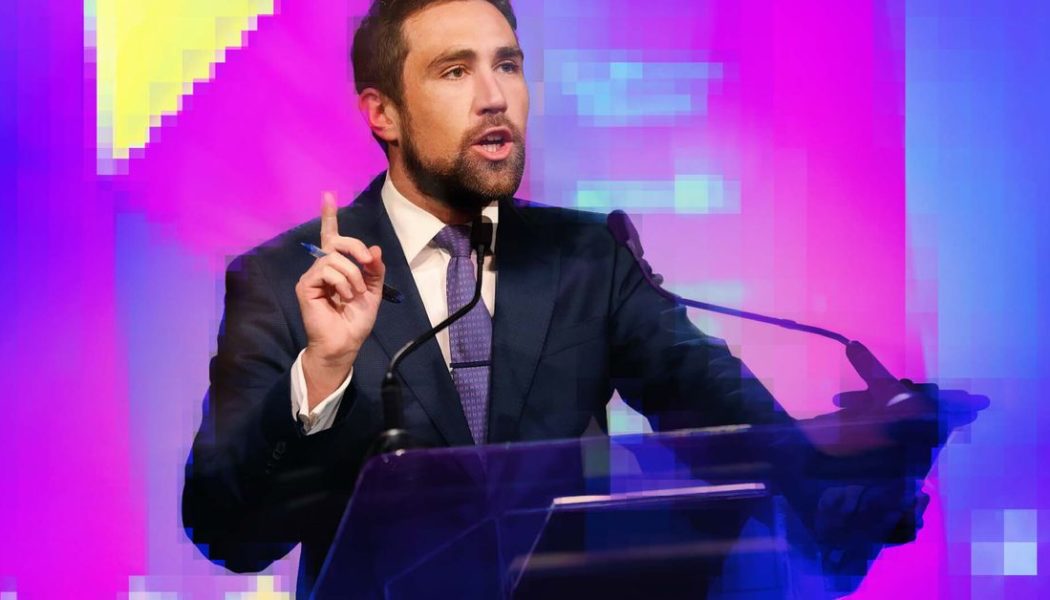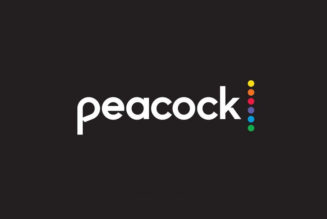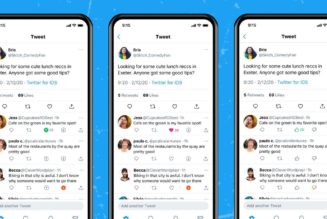
Walking up to a podium in San Francisco this summer, Kevin Paffrath grabs the microphone. “Hodl that AMC,” he says with a smile, gazing out at the few dozen or so people, predominantly young men, attending the rally, a reference to the “meme stock” moment from earlier this year.
Paffrath, better known as MeetKevin on YouTube, is running to unseat Gov. Gavin Newsom in California’s recall election this month. It’s rare that a gubernatorial candidate would lead off a speech with such a painfully online reference, but that’s part of Paffrath’s appeal. He’s branded himself as the candidate for the r/wallstreetbets crowd — and so far, it’s working. As of publication, he’s the top polling Democrat at 8 percent.
Since 2017, Paffrath has made YouTube videos full-time from his home in Ventura, streaming his takes on the financial and cryptocurrency markets to an audience of over 1 million subscribers. He’s also the only Democrat spending big to win the election, and it’s made him the most viable candidate outside of Republicans like Larry Elder, a popular conservative talk radio host.
Paffrath has no choice but to run as an outsider. He’s not a prominent figure in the Democratic Party or a well-seasoned politician. He’s a 29-year-old man in a suit, a real-estate guy, and a poster fluent in crypto-speak. Paffrath sees his outsider status as an advantage rather than a drawback, in the same vein as entrepreneurs like Donald Trump and Andrew Yang who turned their massive media followings into powerful political movements.
The chaos of California’s recall system can reward that kind of outsider bid. Newsom remains deeply unpopular (although his polling has improved in recent weeks). If he loses the up or down vote, the actual gubernatorial vote will be split among a dozen different candidates, with only a plurality needed to win. In 2003, that same chaos saw Gary Coleman and Arianna Huffington throwing their hats in the ring — and Arnold Schwarzenegger becoming governor. In 2021, California has seen a more representative crop: a conservative radio host, a reality television star, and a social media influencer.
If Paffrath wins on September 14th, he says he wants to “bring YouTube to government,” he told me over the phone last Tuesday. “YouTube could be a transparency tool as much as it could be a transparency weapon,” he said. “To make sure Californians know what’s standing in the way of the legislature getting things done.”
Streaming in front of a colorfully backlit set, Paffrath earns more than “several million dollars a year in ad revenue alone” on YouTube, according to a recent Wall Street Journal report. His video thumbnails often show him donning shocked faces, and his titles use emotional or humorous phrasing like “the fed JUST froze over” or “Stock Market YOLO.”
At the height of the meme stock movement in February, Paffrath gained over 150,000 subscribers, according to SocialBlade. As that stock rush slowed, so did his growth. A few months later, he launched his gubernatorial campaign. But just as the Wall Street Bets posters sought to send GameStop “to the moon,” Paffrath is leveraging many of their same strategies to win his own moonshot campaign this month. Or maybe it’s just another growth hack.
At that same July rally, Paffrath lamented the loss of businesses and celebrities who had recently moved out of California due to what he said to be rising real estate prices.
“Gavin says he doesn’t care if Tesla leaves. He doesn’t care if businesses leave,” Paffrath said, holding an iPad to read off his remarks. “Joe Rogan left. Elon Musk left. Coinbase left. Snowflake left. Palantir left. Hewlett Packard left.”
When his mic stopped working, Paffrath told the crowd, “I’m shorting Sennheiser” with a laugh.
It’s this list of people and businesses Paffrath sees as representing his vision of California’s future. “We got to start by thinking big,” he told me over the phone last week.
By big, he explains that he wants to end homelessness in 60 days by tasking the National Guard “with compassionately serving” the homeless community and moving them into vacant buildings. By big, he says he wants to incorporate “financial education” into the school system and partner with businesses in exchange for workers in “high-demand” careers like computer programming and electrical engineering. He wants to fully legalize gambling to help invest in “Las Vegas Strip style entertainment,” projecting $5–10 billion in tax revenue for the state. At his first debate earlier this summer, Paffrath touted these ideas along with others, like building a giant pipeline to the Mississippi river to solve California’s drought problems.
It may seem far-fetched for someone like this to be gaining ground, but he’s using a set of tactics that have proven to be immensely powerful for building a devoted base online. On YouTube, Paffrath calls on his subscribers to send texts for him to help get out the vote. Three months ago, he launched an app, notably listed in the “finance” category on the App Store, including a big “donate” button for his campaign. If someone uploads five screenshots of pro-Kevin posts they’ve made to the app, they score points. At one point, the highest scorers could win a meeting with Paffrath on a private jet.
“YouTube is very, very incredible because we can make a video and go ‘Hey, I need help for the next 48 hours,’” he says. “There’s just thousands of volunteers willing to do whatever it is we need. It’s very flattering.”
More recently, Paffrath filmed himself attending, or trying to attend, a Newsom rally. Earlier this week, Paffrath posted a video of himself being turned away from one. Fox News wrote up the incident. He tweeted it, along with other posts about being “BANNED,” scoring almost one thousand likes on Twitter.
“This is the 3rd time Fox National has cover the abuse of the Democratic process,” Paffrath tweeted. “Censorship by Instagram (deleting my initial announcement, CNN saying there’s no Democrat running vs Newsom (while a then current poll showed me beating Elder, + this.”
These outrage posts, giveaways, and gamification have helped boost Paffrath in the polls. He’s using tactics familiar to his finance audience online, but in a way that expands his influence outside of that insular community. It’s a growing tactic over the last few election cycles as influencers spanning the gamut of right-wing reactionary YouTube pranksters to socialist TikTok stars have decided to throw their hats into the electoral ring, finding plenty of hype and little success.
“If a politician can speak to that constituency through skillful (and not cringey) use of insidery memes and language, it signals that they understand and are committed to all of that,” Lana Swartz, an assistant professor of media studies at the University of Virginia, told me last week. “It can be a very powerful message that transcends traditional partisan divides and eclipse other issues.”
Next Tuesday is the last day for Californians to decide whether Newsom will remain as governor, and if not, who will replace him. This week, Arnold Schwarzenegger said that Newsom was in a “very dangerous” position, comparing the current recall climate to the one that ultimately launched the Terminator star to the governor’s office back in 2003.
But for Paffrath, the model is less Arnold and more Elon. He talks about Musk constantly — when I asked him why, he said simply: “He’s brilliant.”
“You should see what Elon Musk said this morning,” he told me, pointing me to a video he retweeted earlier in the day of Musk in Berlin complaining about the state of politics. “He recognizes and is willing to say what’s wrong,”









